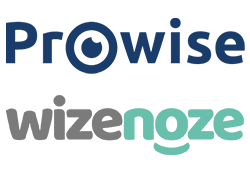How to help pupils find a way through the internet minefield

“We are not a school that is trying to deny the existence of the new world in which our pupils live,” says Shonogh Pilgrim, the headteacher of Ansford Academy in Somerset.
The ‘new world’ she’s talking about is the world wide web, which many schools still struggle to use to its full potential even 30 years after its invention.
Alongside fantastic sites laden with information and learning resources that can help pupils increase their knowledge and teachers engage classes with new topics, there are plenty that could have a negative impact on pupils’ learning. Websites may contain out-of-date information, poorly presented data, dubious sources, content that is irrelevant to the curriculum, or even sites that are too advanced for the pupils accessing them, and thus offering no educational value. Plus, of course, there is the obvious risk of pupils accessing websites they definitely shouldn’t.
More on this: ‘Let’s stop our students getting lost in the web’
Background: Why schools need to stop being afraid of the web
Read more: Why readability is key for understanding online content
For Ansford Academy this was a problem that needed addressing. The secondary school, attended by 600 children, has always had an ethos that embraces new ideas and empowers pupils’ own learning journeys: “We are trying to work with our students to enable them to be independent, discerning learners,” says Pilgrim.
“Our curriculum is built around them developing strong learning skills and, by working closely with their tutor in the role of academic coach, enabling them to have increasing agency. We teach our students how to be literate in their use of information through our curriculum, making sure they know how to judge the reliability and validity of the sources they access.”
However, Pilgrim notes that unfettered access to the internet can work against this pedagogical goal: ”Some students quickly thrive with this method of learning but others learn the necessary skills more slowly, and some find it almost impossible to make sense of the world because their literacy skills are not yet developed enough for them to read what is out there [on the web].”
Cutting the internet to size
At first, the school tried to protect pupils against information overload by choosing the web content it wanted them to use on their behalf. However, in the end, this proved too limiting. “We had attempted to address this [issue] by finding links to appropriate sites and embedding them within our resources,” says Pilgrim. “[But] the limited time and breadth of knowledge available to do this meant the information we were curating for our students was less rich than it could have been because it was only harvested from sites that we as teachers knew about.”
To tackle this, Ansford turned to Wizenoze and its Web for Classrooms platform. Wizenoze is a company whose mission is to find relevant, readable and reliable information for teachers, so they don’t have to. Its Web for Classrooms product offers schools the ability to present pupils with a ‘walled garden’ version of the web that provides access only to approved and trusted websites. It’s a huge resource with 4.5 million pages indexed on the platform, curated from trusted, relevant sites.
Furthermore, it allows content to be searched against pre-defined criteria such as age and learning ability. This ensures the results returned are suitable to a pupil’s specific requirements and can therefore genuinely aid and augment their learning outcomes.
Pilgrim says this was exactly what the school needed: “We are excited by the prospect of Wizenoze because it does the legwork for us. It enables us to allow our students to have open access to a much wider range of resources but without them being overwhelmed by information that is irrelevant and inaccessible to them.”
Not only that but it also provides better peace of mind that students will not stumble across unsuitable websites: “Wizenoze gives us security that our students are not being bombarded with commercial materials or inappropriate or dangerous content,” adds Pilgrim.
Safe online journeys
Another school that is benefiting from Wizenoze’s Web for Classrooms platform is Stanchester Academy in Somerset. They too are concerned that for some pupils the web is too overwhelming to be of real use - particularly its students with special educational needs or disabilities (SEND).
“There is an assumption that internet ‘research’ tasks are less demanding of support,” says Amy Joynes, the secondary’s principal. “But actually for those students for whom we are trying to achieve equality, we have created a new challenge [because they] have access to an inconceivable amount of knowledge, far more than they can assimilate with ease. For our students with SEND, this creates a minefield of problems - not least the simple task of filtering out the number of results and the ‘fake’ news from the fact.”
As such, the school is moving to roll out the Wizenoze platform, implemented through education software Prowise Presenter. Joynes says the school is excited by the move as it will ensure that pupils of all abilities can improve their learning outcomes thanks to being able to access relevant and age-appropriate information.
“Our students will be able to focus on their knowledge and content as opposed to being distracted by trying to navigate an endless sea of information,” she says.
Dan Watson is a freelance journalist writing about technology and business
